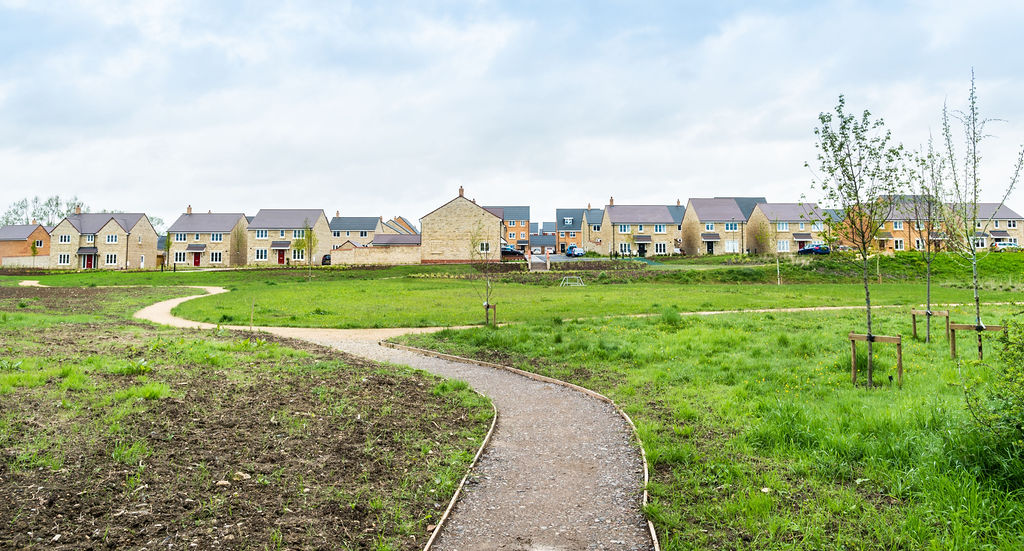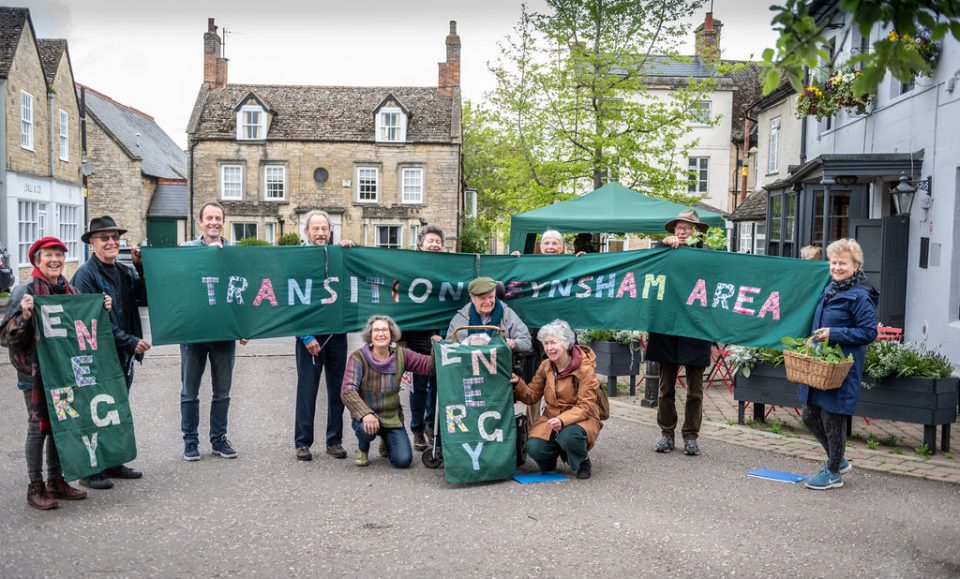- Case studies
- Eynsham Smart and Fair Futures

Eynsham Smart and Fair Futures
Smart and Fair Neighbourhood Trial
The Eynsham Smart and Fair Futures Trial formed part of Project LEO’s Smart Fair Neighbourhood (SFN) projects. These six sets of local trials explored how Smart Community Energy Scheme (SCES) business models can sit at the heart of a smart, low-carbon, locally balanced energy system, creating opportunities and benefits in an equitable and fair way for everyone.
What were we testing at Eynsham?
The Eynsham Smart and Fair Futures project was a first-of-its-kind approach to creating a workable plan for a community to reach net zero prior to 2050 at a local substation level.
The area, which consists of parishes served by the same primary substation, is undertaking substantial development of new homes (this will double the current population of the area and the number of homes), so Project LEO worked with the local community low carbon group with the aim of developing a Zero Carbon Energy Action Plan for the primary substation area (see below).
The Zero Carbon Energy Action Plan for the area needs to include the 3,200 new houses as well as the existing households and look at the variety of actions that can be taken for the whole area can transition to net zero by 2050 at the latest.
Why Eynsham?
This project focuses on The Cuckoo Lane primary substation area in Oxfordshire. There were a number of reasons why this particular area was ideal for this kind of trial. The parishes that are served by the substation already have a high community engagement in smart and clean energy solutions.
Key to the success of the trial was the local low-carbon group Green TEA (Transition Eynsham Area), a vibrant and dedicated group that has been finding local solutions to climate change in the area for twelve years. They were already committed to finding ways to ensure their community stayed ahead in the race to net zero.
Also, the planned construction of multiple new homes in the area brought the opportunity to explore business models for a zero-carbon new development that dealt with the split incentive between developers wanting to minimise capital costs and occupiers wanting to minimise operational costs in terms of energy savings.
Traditionally, energy planning like this is usually done at a larger scale, but this pioneering action plan is at a community scale and will be a useful model for other areas to follow to speed up the move to zero carbon.
The Cuckoo Lane primary substation area includes all or parts of the parishes of Cassington, Eynsham, Freeland, Farmoor in Cumnor, Hanborough, North Leigh, South Leigh, Stanton Harcourt & Sutton.
What did the trials involve?
The overall aim for the Eynsham area is to reach net zero and have a cleaner, greener energy system as soon as possible. To do this they realised they needed to halve their overall energy usage and double their renewable energy generation. Achieving this would create a zero carbon energy system locally, at the primary substation level that balances out energy generation, storage and usage behind the substation.
In order to find a way to achieve this, it was necessary to develop a Zero Carbon Energy Action Plan for the whole Eynsham primary substation area and to develop the long-term stewardship proposals to govern the Action Plan, including its resourcing plan, whereby the community can ensure that the Energy Action Plan for Eynsham reaches the goal of a zero carbon energy system in advance of 2050.
The development of this plan (known as CAPZero) was the primary delivery of the trial and it is central to identifying scenarios of how the whole area can transition to net zero, including looking at:
- Ingraining sustainability in new build homes.
- Maximising energy efficiency in existing homes to cut energy use.
- Exploring the use of community-owned renewable energy generation on a larger scale.
The ‘hyper-local’ CAPZero is drawing upon the county-level ‘Pathways to Zero Carbon Oxfordshire’ report, and extrapolates net zero targets for 2030 and 2050 for the Eynsham primary substation area, based on proportions of population and land area. It has also benefited from other expert input:
- energy modelling of scenarios for new developments by Urbanomy (undertaken as part of Project LEO for Oxfordshire County Council)
- energy modelling of scenarios for the existing developments, and new ones (drawing on Urbanomy and WODC data) by the Energy Systems Catapult (ESC), commissioned as part of Project LEO for the EY SFN Local Steering Group (LSG)
- local knowledge of the community and area brought by the Eynsham steering group.
Engaging the community was integral to the aims of CAPZero. The project did this by including updates in GreenTEA communications, and residents of Eynsham and other parishes served by the primary attended a range of events, competitions and games based around Great Big Green Week in September 2021 and September 2022. One of these was the Great Big Energy Saver event in 2022.
Who was involved?
The Eynsham Smart and Fair Futures Project was run by Low Carbon Hub in partnership with Green TEA (Transition Eynsham Area) which chaired the steering group, supported by representatives of the local parish councils.
West Oxfordshire District Council provided links to spatial planning. Energy Systems Catapult and Urbanomy were the project’s energy modelling planning consultants (a contract managed by Oxfordshire County Council, as part of Project LEO). And Oxfordshire County Council also introduced links to energy modelling and LEO mapping work. Scottish and Southern Electricity Networks (SSEN) provided local energy system data.

What did we learn from the trial?
The CAPZero for the Eynsham primary substation area has successfully identified three main priorities for action to achieve net zero by 2030, and new opportunities to be explored to help achieve them, concluding with a vision for 2050.
Most importantly, it shows actions that local councils, people and businesses can take now, based on known technologies and models. It also looks at land use and gives estimated costs for activity and how the measures identified in the report can potentially be delivered through a number of investible propositions. This addition of an assessment of suitable investment models to deliver the decarbonisation projects is another innovation which has not previously been incorporated into local area energy planning.
The report itself was innovative, as Local Area Energy Plans are normally developed for much larger geographic areas, for CAPZero the scaled modelling to a primary substation area represented a first-of-its-kind approach.
The first pilot CAPZero, ‘Community Action Plan for Zero Carbon Energy’, shows what is needed to balance out a community’s energy supply and demand behind the primary substation using community-scale renewable energy and potential Smart Community Energy Systems business models, including shared loop heat pumps, microgrids for new developments, community-scale battery storage and power purchase agreements and financing models for installing domestic solar PV and battery Storage.
The Eynsham Smart and Fair Futures project demonstrates the need for a ‘grid edge coordinator’ role to create change, catalyse action and unlock the value at the grid edge. This role would not only bring the relevant parties together, accessing the diverse inputs needed from experts in land and energy planning; but also:
- Communicate energy and local planning to real people: accessing local groups and institutions, such as parish councils, and doing the work to gain their buy-in and contribution.
- Educate on energy and spatial planning to ‘make it real’: bringing energy sector expertise and an understanding of what smart local energy systems are, then working out what such a system could offer a local area.
Delays in projects expected to generate community benefit that would fund stewardship of the CAPZero means the question of who leads and stewards over the long term needs to be looked at again, and the resulting gap filled.
The plan identified the need for a comprehensive national policy framework, joining up spatial and energy planning and lacing the primary substation at the heart of the local area energy planning process to achieve a zero-carbon energy system.
This pioneering trial was an important first step in our learning process on how communities can successfully plan their energy systems at a localised level to achieve their net zero goals. Importantly it shows how we can do so in a way which benefits and motivates current and future residents and organisations, and provides a template to inspire wider action.